
This year is the 30th anniversary of Nintendo’s symbolic character Mario – which means it has also been 30 years since the Nintendo Entertainment System made its way to North America. In celebration, we’ve decided to not only dedicate an entire month to the Japanese monster, but rate the 100 best games they’ve released in the past three decades. Here is part 3.
****
 80. Contra 3: The Alien Wars
80. Contra 3: The Alien WarsDeveloper(s) Konami
Publisher(s) Konami
Platform(s) Super Nintendo Entertainment System
NA April 6, 1992
Genre(s) Run and gun
–
Set in the year 2636, the alien invaders that were defeated during the previous Contra installments have returned and launched a full-scale attack against mankind. The Alien Wars was the fourth Contra game to come to the States, after Contra and Super C on the NES and Operation C on the Game Boy. While previous Contra games drew inspiration from action movies like Rambo, Contra III features a host of Hollywood blockbuster references including enemies who appear straight out of an early James Cameron film (Terminator, Aliens). Replacing the jungle themed levels is a post-apocalyptic metropolis overrun by alien invaders, and the identities of Bill and Lance (the original Contra heroes), were swapped with their descendants Jimbo and Sully. The power of the Super NES allowed for better graphics, enhanced sound and unique new spins on the classic run-and-gun gameplay – bringing it closer to the quality of their arcade counterparts. The level design is more complex and the players are more flexible – able to grab on to poles or ceilings, climb walls and ladders, grapple up walls and somersault through the air. The player can also shoot in eight possible directions without moving or jumping. In addition, the levels in The Alien Wars involve two Mode 7 enabled top-view stages. The Contra series has always been known for its difficulty, begging even the most practiced of gamers to cheat, but Konami used every trick up it’s sleeve to make Contra III: The Alien Wars the ultimate SNES shooter and even removed the famous Up-Up-Down-Down Konami Code (which normally grants players 30 lives in the first Contra titles). Without the classic cheat, there’s no easy way out. Contra III is arguably the best installment in the Contra series, a game which plays like a 80s big budget Hollywood film, with action that is fast and furious. (Ricky D)
–
Set in the year 2636, the alien invaders that were defeated during the previous Contra installments have returned and launched a full-scale attack against mankind. The Alien Wars was the fourth Contra game to come to the States, after Contra and Super C on the NES and Operation C on the Game Boy. While previous Contra games drew inspiration from action movies like Rambo, Contra III features a host of Hollywood blockbuster references including enemies who appear straight out of an early James Cameron film (Terminator, Aliens). Replacing the jungle themed levels is a post-apocalyptic metropolis overrun by alien invaders, and the identities of Bill and Lance (the original Contra heroes), were swapped with their descendants Jimbo and Sully. The power of the Super NES allowed for better graphics, enhanced sound and unique new spins on the classic run-and-gun gameplay – bringing it closer to the quality of their arcade counterparts. The level design is more complex and the players are more flexible – able to grab on to poles or ceilings, climb walls and ladders, grapple up walls and somersault through the air. The player can also shoot in eight possible directions without moving or jumping. In addition, the levels in The Alien Wars involve two Mode 7 enabled top-view stages. The Contra series has always been known for its difficulty, begging even the most practiced of gamers to cheat, but Konami used every trick up it’s sleeve to make Contra III: The Alien Wars the ultimate SNES shooter and even removed the famous Up-Up-Down-Down Konami Code (which normally grants players 30 lives in the first Contra titles). Without the classic cheat, there’s no easy way out. Contra III is arguably the best installment in the Contra series, a game which plays like a 80s big budget Hollywood film, with action that is fast and furious. (Ricky D)
–
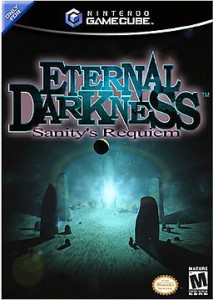 79. Eternal Darkness: Sanity’s Requiem
79. Eternal Darkness: Sanity’s RequiemDeveloper(s) Silicon Knights
Publisher(s) Nintendo
Platform(s) GameCube
NA June 23, 2002
Genre(s) Action-adventure
–
This game, quite honestly, likes to “mess” with you. Eternal Darkness is a psychological survival-horror. The story revolves around Alexandra Roivas who discovers the mysterious murder of her grand-father. Eternal Darkness takes place in multiple time periods, leaving you to assume the role of many characters during the game. I think one of the main appeals of Eternal Darkness had to be the sanity effects. Aside from your standard health bar you also had a sanity meter which depleted in various ways. Some of the things that happened when you’re meter was low could be pretty unsettling. Eternal Darkness had a knack for breaking the fourth wall during gaming, sometimes convincing you that you’d deleted your precious save file by accident, or making you think your controller got disconnected, leaving you to watch your character get executed as a consequence. ED was a very unique horror title for the time. It was a refreshing take on the genre that is memorable even today among survival horror classics. (Aaron Santos)
–

Developer(s) Konami
Publisher(s) Konami
Platform(s) NES
NA September 1, 1990
Genre(s) Action, Platforming
–
Having tasted critical and commercial success with the original NES outing, Nintendo took a big risk in giving its direct sequel an entirely different spin. The result was Castlevania II: Simon’s Quest, a game which is fondly remembered by some fans and hated by others (including myself). Thankfully, Castlevania III: Dracula’s Curse reverts back to the platform game roots of the first Castlevania title. Unlike Castlevania, however, Castlevania III is non-linear and set 100 years before the first outing. Players once again assume the role of a vampire hunter extraordinaire, only this time it’s Simon’s ancestor, Trevor Belmont. In addition, Trevor can be assisted by special companions, which he can switch places with at any time — Sypha Belnades, Grant Danasty and Alucard — who have since become part of the fabric of Castlevania lore. Konami spent a lot of time fine-tuning the gameplay here and the result is almost perfect – and musically, Dracula’s Curse improves on its prequels dramatically, offering up some of the best songs you’re likely to hear in any game, period. Many devoted followers will argue that the NES game is the best in the franchise, while others will be split between Symphony of the Night and Super Castlevania IV. Either way, I think we can all agree that Dracula’s Curse is one of the finest NES titles ever made. (Ricky D)
–
Having tasted critical and commercial success with the original NES outing, Nintendo took a big risk in giving its direct sequel an entirely different spin. The result was Castlevania II: Simon’s Quest, a game which is fondly remembered by some fans and hated by others (including myself). Thankfully, Castlevania III: Dracula’s Curse reverts back to the platform game roots of the first Castlevania title. Unlike Castlevania, however, Castlevania III is non-linear and set 100 years before the first outing. Players once again assume the role of a vampire hunter extraordinaire, only this time it’s Simon’s ancestor, Trevor Belmont. In addition, Trevor can be assisted by special companions, which he can switch places with at any time — Sypha Belnades, Grant Danasty and Alucard — who have since become part of the fabric of Castlevania lore. Konami spent a lot of time fine-tuning the gameplay here and the result is almost perfect – and musically, Dracula’s Curse improves on its prequels dramatically, offering up some of the best songs you’re likely to hear in any game, period. Many devoted followers will argue that the NES game is the best in the franchise, while others will be split between Symphony of the Night and Super Castlevania IV. Either way, I think we can all agree that Dracula’s Curse is one of the finest NES titles ever made. (Ricky D)
–
 77. Mario Paint
77. Mario PaintDeveloper(s) Nintendo R&D1
Intelligent Systems[2]
Platform(s) Super Famicom/SNES
NA August 1, 1992
Genre(s) Art tool, Non-game
–
In 1993, according to the US Census Bureau, only 31.9 percent of children between the ages of 3 and 17 had access to a computer at home, while 60.6 used one at school. Now that we’re all surrounded by monitors and devices, it can be difficult to imagine a time when most youngsters were not born into a menagerie of desktops, laptops, tablets, smart phones, and e-readers. As William Gibson once said: “It’s harder to imagine the past that went away than it is to imagine the future.” Mario Paint, released in 1992, was a bizarre concoction and, for many children, this writer included, an introduction to personal computer literacy. A spruced up Microsoft Paint, it came with a mouse and a pad, which made the title as expensive as it was irresistibly novel. Along with basic music generation and animation tools, to produce short and crude videos, it also offered a ridiculous fly-swatting mini-game, a throwback to simple arcade gameplay before retro gaming turned into a millennial cliché. This kind of compartmentalized experience was not common on the Super Nintendo. There was usually the one game included in the cartridge, and that was it. Games within games would be more prevalent in later years. But Mario Paint incorporated the windowed logic of an operating system and allowed users to engage in different kinds of activities, save their work, and combine it. This merging of personal computer and console interfaces anticipated the gaming future, when consoles would behave like low-end, web-ready desktops with home screens, as comfortable with YouTube videos as with The Last of Us. And it also reflected the immediate past, when a personal computer like the Commodore 64 could compete with consoles (and is now often, albeit erroneously, equated with them); and the Nintendo Entertainment System, even as it popularized the concept of simplified, kid-friendly, plug-in-and-play gaming, was compatible with specialized modems, disk systems, and the Family BASIC, a cartridge-and-keyboard bundle for game programming. Mario Paint, then, taught many children an obvious but easily forgotten fact: consoles are computers, too. (Guido Pellegrini)
In 1993, according to the US Census Bureau, only 31.9 percent of children between the ages of 3 and 17 had access to a computer at home, while 60.6 used one at school. Now that we’re all surrounded by monitors and devices, it can be difficult to imagine a time when most youngsters were not born into a menagerie of desktops, laptops, tablets, smart phones, and e-readers. As William Gibson once said: “It’s harder to imagine the past that went away than it is to imagine the future.” Mario Paint, released in 1992, was a bizarre concoction and, for many children, this writer included, an introduction to personal computer literacy. A spruced up Microsoft Paint, it came with a mouse and a pad, which made the title as expensive as it was irresistibly novel. Along with basic music generation and animation tools, to produce short and crude videos, it also offered a ridiculous fly-swatting mini-game, a throwback to simple arcade gameplay before retro gaming turned into a millennial cliché. This kind of compartmentalized experience was not common on the Super Nintendo. There was usually the one game included in the cartridge, and that was it. Games within games would be more prevalent in later years. But Mario Paint incorporated the windowed logic of an operating system and allowed users to engage in different kinds of activities, save their work, and combine it. This merging of personal computer and console interfaces anticipated the gaming future, when consoles would behave like low-end, web-ready desktops with home screens, as comfortable with YouTube videos as with The Last of Us. And it also reflected the immediate past, when a personal computer like the Commodore 64 could compete with consoles (and is now often, albeit erroneously, equated with them); and the Nintendo Entertainment System, even as it popularized the concept of simplified, kid-friendly, plug-in-and-play gaming, was compatible with specialized modems, disk systems, and the Family BASIC, a cartridge-and-keyboard bundle for game programming. Mario Paint, then, taught many children an obvious but easily forgotten fact: consoles are computers, too. (Guido Pellegrini)
–
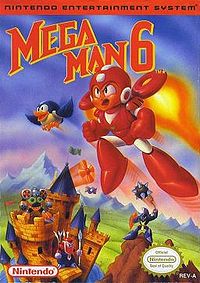 76. Mega Man 6
76. Mega Man 6Developer(s) Capcom
Publisher(s) JP Capcom / NA Nintendo
Platform(s) Nintendo Entertainment System
NA March 15, 1994
Genre(s) Action, platform
–
Each installment of Capcom’s Mega Man series for the NES is basically pristine — there isn’t a bad one in the bunch. But a case can be made that part six, released in 1993, was the best of the series. For one thing, it integrated everything that made parts four and five great (the ability to supercharge your blast via the “Mega Buster” and the inclusion of B.E.A.T., the mechanical bird, as an ancillary ally character). The graphics are sharper than any previous installment and the gameplay is smoother. The story is even more novel: a robot building tournament is being held, and Dr. Light, who is weary of the ethical implications of the tournament, sends Mega-Man to supervise. Isn’t it just Mega Man’s luck that eight expertly designed, weaponized robots are now waiting for him to show up so they can fight him to the death? Some NES purists criticize the game for not adding new ideas or material to the mix. The defense that we are making is that it is the sleekest iteration of the NES Mega Man games — the one with the best graphics, and the most replay value. Did we mention that the game also features the greatest Mega Man villains? Our favorites include: Blizzard Man, Centaur Man, and Flame Man. (Brandon Engel)
–
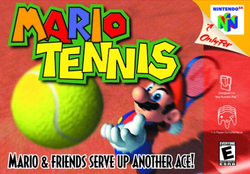 75. Mario Tennis
75. Mario TennisDeveloper(s) Camelot
Publisher(s) Nintendo
Platform(s) Nintendo 64,
NA August 28, 2000
NA December 26, 2013
Genre(s) Sports
–
Following the release of Mario Golf for the N64 in 1999, its developers directed their sights to making a similar game with another sport. A year later, the result is the first tennis-related game for the console and the first to ‘star’ the eponymous plumber since 1995, when Mario’s Tennis was released for the ill-fated Virtual Boy. Mario Tennis has a simplistic premise of the famous plumber and his friends playing sports but the N64’s bright and eye-catching graphics, the accurate simulation of serves and volleys, and the characters’ special moves, raise the level of gameplay to become more than just hitting a ball. However, Mario Tennis is boosted by its numerous multiplayer options, providing a sports game with endless amounts of fun. Put simply, it is Mario Kart with fuzzy balls. (Katie Wong)
–
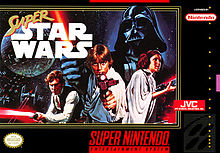 74. Super Star Wars
74. Super Star WarsDeveloper(s) Sculptured Software / LucasArts
Publisher(s) JVC/Nintendo
Platform(s) Super NES, Wii (Virtual Console)
NA June 1, 1992
Genre(s) Run and gun
–
Following the tradition of the original Nintendo Entertainment System, the SNES was home to huge amounts of licensed video games. Unlike its NES predecessor, however, the SNES delivered a fantastic series of Star Wars games that deserves to be counted amongst the consoles best run and gun platformers. Super Star Wars began the adaptations of the popular films for SNES owners, who were treated to labors of love that brought the world of Star Wars to life (or as well as they could be for a 16-bit system). The platforming elements themselves were addicting and interspersed with other levels in which the player could control a landspeeder or X-wing. But it was the different levels of difficulty that kept people coming back. The hardest levels of Super Star Wars approach Super Ghouls ’n Ghosts territory in terms of frustration, but SNES users were probably already used to masochistic tendencies when picking up a Nintendo controller. Later generations of gamers who grew up on things like Knights of the Old Republic might balk at the Super Star Wars franchise were they to play it now, but all the successful Star Wars games of different genres that came after Super Star Wars owe a debt to its huge popularity. (Sean Colletti)
–
 73. Super Castlevania IV
73. Super Castlevania IVDeveloper(s) Konami
Publisher(s) Konami
Platform(s) Super Nintendo Entertainment System, Virtual Console
October 31, 1991
Genre(s) Action, Platformer
–
Released during the Super Nintendo’s formative years and following three popular outings on the 8-bit system, Super Castlevania 4 (or Devil’s Castle Dracula) was originally marketed as a sequel to its predecessors, but it’s really more of a remake. Masahiro Ueno, now free from the restrictions of Nintendo’s aging 8-bit hardware was given carte-blanche to develop the game. Leading the development team at Konami, he delivered one of the best gaming adventures ever concocted. Super Castlevania 4 featured groundbreaking Mode 7 effects for the time, unique gameplay mechanics and a rich soundtrack, well beyond anything heard on a console before. Even now, years later, the soundtrack is regarded as one of the all-time greats. Konami took advantage of the new 16-bit hardware and crafted some truly unique environments including the jaw-dropping rotating room of Level 4, and the tinsel golden castle treasury – one of the most memorable stages in the franchise to date. SCIV’s biggest change however, was the weapon mechanics. Simon Belmont is able to aim his whip in multiple directions and swing across huge platform gaps. As a result, players had more control over Simon’s actions and his signature weapon – helping to make playing the hero all the more immersive. Castlevania would go on to bigger and better things by mixing platforming and RPG mechanics in Symphony of the Night, but this good, old-fashioned platformer is a masterpiece of 16-bit programming and has lost none of its ability to enthrall and captivate decades later. (Ricky D)
–
Released during the Super Nintendo’s formative years and following three popular outings on the 8-bit system, Super Castlevania 4 (or Devil’s Castle Dracula) was originally marketed as a sequel to its predecessors, but it’s really more of a remake. Masahiro Ueno, now free from the restrictions of Nintendo’s aging 8-bit hardware was given carte-blanche to develop the game. Leading the development team at Konami, he delivered one of the best gaming adventures ever concocted. Super Castlevania 4 featured groundbreaking Mode 7 effects for the time, unique gameplay mechanics and a rich soundtrack, well beyond anything heard on a console before. Even now, years later, the soundtrack is regarded as one of the all-time greats. Konami took advantage of the new 16-bit hardware and crafted some truly unique environments including the jaw-dropping rotating room of Level 4, and the tinsel golden castle treasury – one of the most memorable stages in the franchise to date. SCIV’s biggest change however, was the weapon mechanics. Simon Belmont is able to aim his whip in multiple directions and swing across huge platform gaps. As a result, players had more control over Simon’s actions and his signature weapon – helping to make playing the hero all the more immersive. Castlevania would go on to bigger and better things by mixing platforming and RPG mechanics in Symphony of the Night, but this good, old-fashioned platformer is a masterpiece of 16-bit programming and has lost none of its ability to enthrall and captivate decades later. (Ricky D)
–
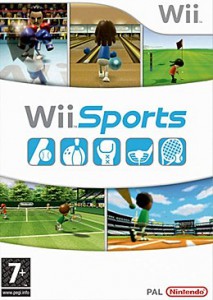
Developer(s) Nintendo EAD Group No. 2
Publisher(s) Nintendo
Platform(s) Wii
NA November 19, 2006
Genre(s) Sports
–
Wii Sports may be responsible for numerous filmed accidents on YouTube but by incorporating the Wii’s motion-sensory abilities, it introduced a new way of playing video games to a wider audience. In a bid to get older and younger people interacting and playing together, the concept behind the Wii’s launch game was simplified. In comparison with previous sports-related Nintendo games, professional athletes and even Mario characters were replaced with caricatures of the players or ‘Miis’ to make it more personalized, and combined with the idea of playing outdoor sports in the house, the result is a game that is so simple yet effective that the whole family can get involved. A competitive element is instilled in the Wii Sports features and the idea of exercising through it raises a new dimension on what video games can achieve, paving the way for a new wave of dance and exercise games on seventh generation consoles. (Katie Wong)
–
 71. Animal Crossing New Leaf
71. Animal Crossing New Leaf Developer(s) Nintendo EAD Group No. 2
Publisher(s) Nintendo
Platform(s) Nintendo 3DS
NA June 9, 2013[3]
Genre(s) Social simulation
–
Animal Crossing: New Leaf is the latest in the life simulation series. The new wrinkle to the formula is that instead of just being a resident of the village, players are now the mayor. Similar to previous entries, players catch bugs and fish, incur debt, and collect countless clothing and furniture. On paper, New Leaf sounds a bit boring and tedious. Once you’ve created your town though, it is pure addiction. The Nintendo 3DS opens up the gameplay to feature online play allowing players to view homes of others via StreetPass and even purchase their items. New Leaf really encourages players to create the best possible town, whether for personal gratification or to show the world exactly what you’ve created. No two experiences will be the same, as New Leaf creates endless possibilities for play. Animal Crossing: New Leaf continues to define the genre and delight anyone who wishes to create. (Max Covill)
–
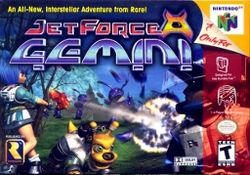 Special Mention: Jet Force Gemini
Special Mention: Jet Force GeminiDeveloper(s) Rare
Publisher(s) PAL Rare / JP Nintendo
Platform(s) Nintendo 64
NA October 11, 1999
Genre(s) Third-person shooter, action-adventure, platforming
–
–
Often overlooked in the annals of classic Nintendo titles, Jet Force Gemini is easily one of Rare’s most well-designed and original properties. Placing you in the shoes of three separate protagonists, one of which is a cyborg dog, Gemini sets you up against a veritable legion of insect aliens across multiple planets in an attempt to stop their enroaching invasion. What makes the gameplay stand out is that each of the three characters has different strengths and weaknesses, requiring you to sometimes replay certain sections with other characters in order to access the secrets and collectables or accomplish certain tasks. There are variable weapons, some incredible boss fights, and a halfway point fakeout ending that really amps things up nicely. Unfortunately Jet Force Gemini is one of only a few titles that Rare hasn’t released on Xbox Live since moving over to Team Microsoft, and neither is it available on Nintendo’s Virtual Console. As such, you’re only option to play this game is to track down the original cart or find a ROM online. (Mike Worby)
–

